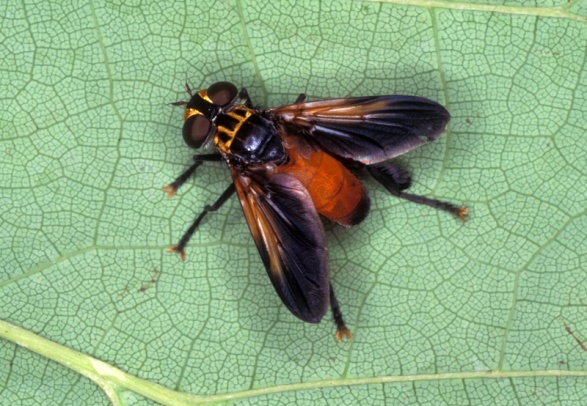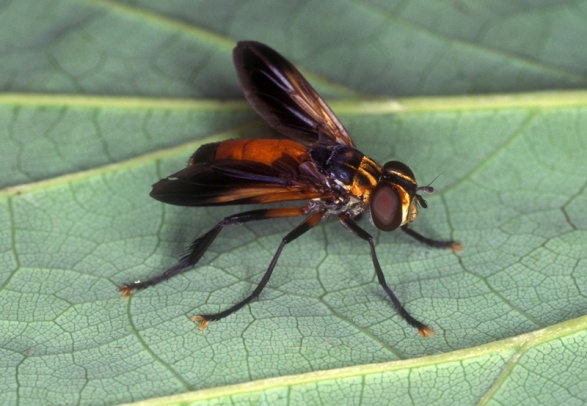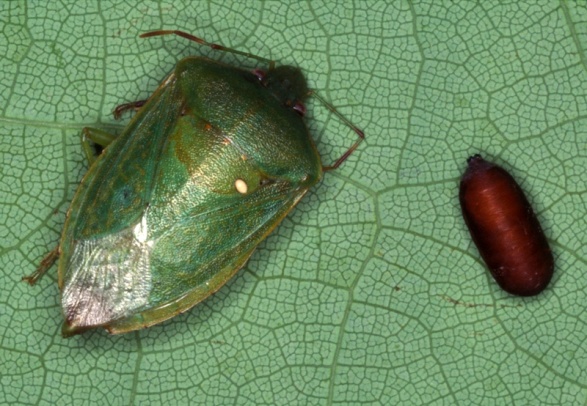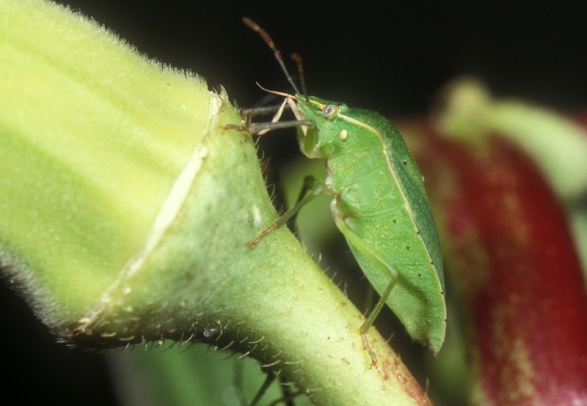
Trichopoda pennipes (Fab.)
(Insecta: Diptera: Tachinidae)
Trichopoda pennipes is a tachinid fly that parasitizes mainly adults but also fourth and fifth instars of southern green stink bug, Nezara viridula (Linnaeus), squash bug, Anasa tristis (De Geer), and at least seven other species of true bugs within three hemipteran families.
Adult flies are about the size of house flies and have a black head and thorax, an orange abdomen, and smoky black wings. They are called feather-legged flies because their hind legs bear short, black hairs. The oval eggs and the maggots are smooth and whitish gray or cream colored. Pupae are oval and dark reddish brown.
Each female may lay several hundred eggs, but only a few are deposited onto each host bug. The hatching larvae burrow into the bug’s body cavity. Only one larva survives and exits the bug as a large maggot, ready to pupate. Up to three generations occur per year, and larvae overwinter inside the host.
In surveys conducted in the mid-1970s, Trichopoda pennipes was found to parasitize southern green stink bug at high rates in North Central Florida. In Hawaii and Australia, this species has been introduced as a biocontrol agent of southern green stink bug.
Images
To save the Web-optimized images shown below to your hard drive:
PC users: right click to "Save Picture (or Image) As..."
Mac users: click and drag to your desktop.

Dorsal view of adult Trichopoda pennipes (Fab.)
(Photographer: James Castner, University of Florida)

Dorsolateral view of adult Trichopoda pennipes (Fab.)
(Photographer: James Castner, University of Florida)

Pupa (right) and oval whitish egg (left) of Trichopoda pennipes (Fab.), the latter deposited onto the back of the southern green stinkbug, Nezara viridula
(Photographer: James Castner, University of Florida)

Egg of Trichopoda pennipes (Fab.) deposited onto the lateral prothorax of the host, southern green stinkbug, Nezara viridula
(Photographer: James Castner, University of Florida)